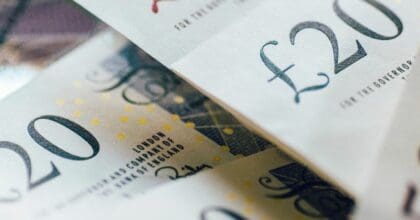The way we pay has been changing for many years but 2020 saw a rapid acceleration of these trends as consumers abandoned cash in favour of the perceived hygiene benefits of using contactless payments. Will cash and cards soon be consigned to the history books and what does this mean for the humble wallet?
Digital payments have been growing for years
The steadily increasing use of digital payments posed a threat to the role of the physical wallet even before COVID-19 transformed our lives. However, despite the growth of digital payment methods prior to 2020 cash remained widely used. In fact, most UK adults had used cash to make a payment in the three months to November 2019.
In reality, digital payments were primarily used by younger age groups with nearly half of 16-44s making a contactless payment by smartphone in the 3 months to November 2019, compared to just one in ten of the over 45s. Pre-COVID-19 consumers adopted a mix-and-match approach to payments, with many continuing to use cash for certain transactions, such as paying for taxis or getting a haircut.
2020 has accelerated the use of digital payments
The events of 2020 have transformed our approach to payments. As of November 2020 more than four in ten UK adults are shopping more online since the start of the pandemic, while a similar proportion continues to try to limit the amount of time they spend in-store.
The increase in the contactless payment limit (from £30 to £45) in April 2020 allowed for the expanded use of contactless payments, while new technology has lowered barriers to entry, enabling more businesses to accept card payments and other digital payments such as QR codes. There are now few places where card payments are not possible.
Hygiene fears have also contributed to the falling use of cash, with many people avoiding it where possible since the start of the pandemic. The result is that use of cash has fallen significantly, as of August 2020 a third said they rarely/never used it.
Physical cards are becoming less relevant
Meanwhile, increased use of payments by smartphone or online are steadily negating the need for physical cards. In fact, a significant number of credit card holders no longer consider a physical card to be an essential feature of a credit card, especially among 18-34 year olds.
Currently, card usage is at an all-time high as consumers ditch cash for the ease and perceived hygiene benefits of paying by card. However, the future of the physical card could also come under threat as payment technologies continue to evolve at a rapid pace.
The increase in the contactless payment limit, the growing use of mobile wallets as well as the adoption of alternative payment methods using QR codes and Open Banking technology will further erode the need for physical cards in the future. While many consumers have a behavioural or emotional attachment to cash, this is unlikely to be the case for payment cards. As a result, the physical payment card could experience a decline in popularity that is even faster than cash as consumers switch to digital alternatives.
A recessionary renaissance for cash?
While use of cash has fallen significantly during 2020, it is not about to disappear entirely. Prior to the crisis, many people used cash simply out of habit. The unique events of 2020 have shifted these habits and many will stick to new forms of payment because of the ease and simplicity they offer.
But others used cash because its physical nature makes it easier to budget and this is especially important for those on lower incomes. As the pandemic comes to an end and government support is wound down, more businesses will fail and unemployment will increase. This will lead more into financial hardship and some to resort back to cash to help them stick to a tighter budget.
Indeed, while cash use declined during 2020, many households have hoarded it as a protection against the uncertainty of the pandemic and Brexit. According to data from the Bank of England, the amount of cash in circulation increased 7% between December 2019 and November 2020, having remained stable for the previous three years. As the economy opens up, hygiene concerns over cash subside; economic hardship increases and government actions to protect access to cash take effect, we may see cash experience a short-term reprieve.







































